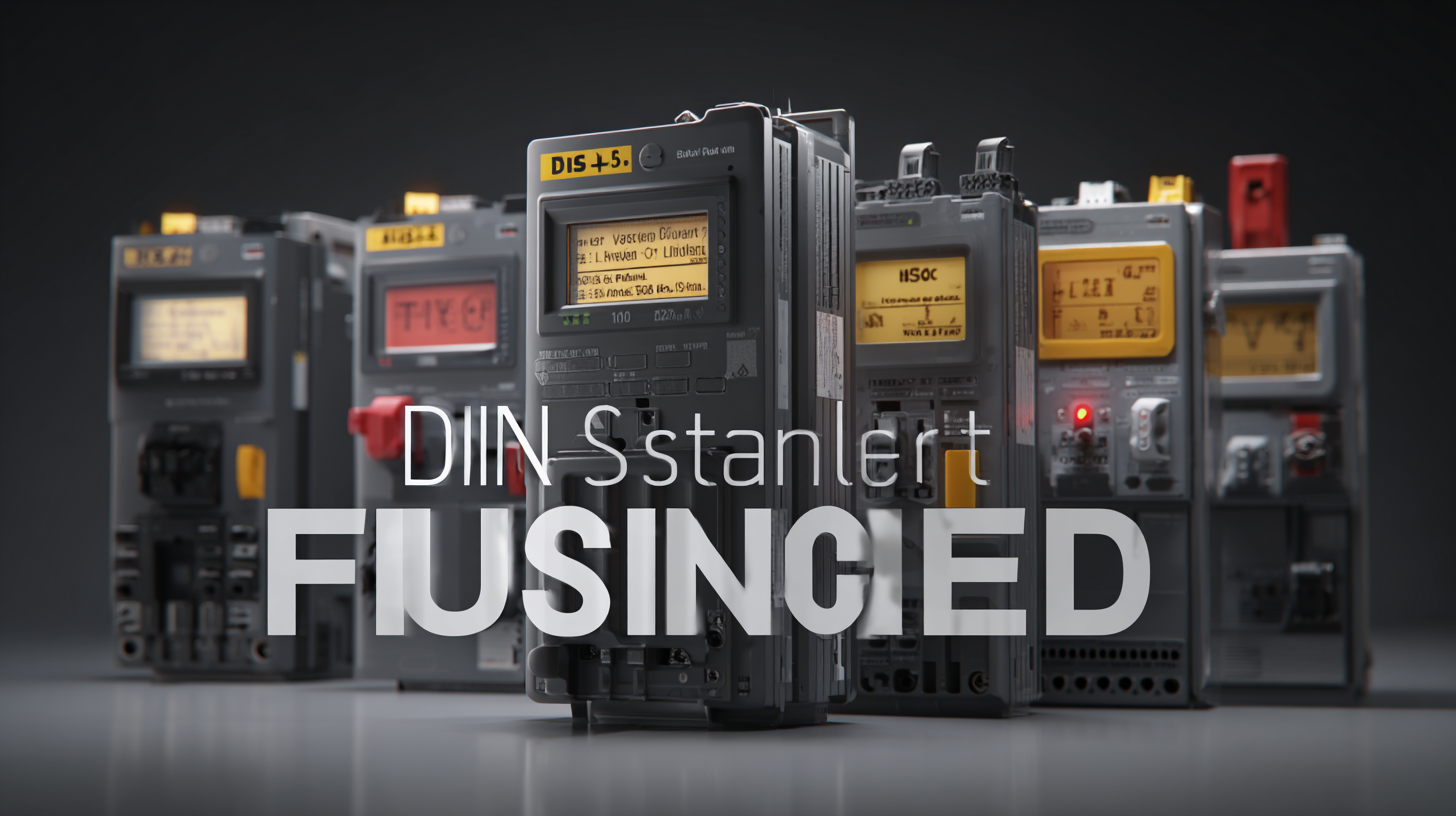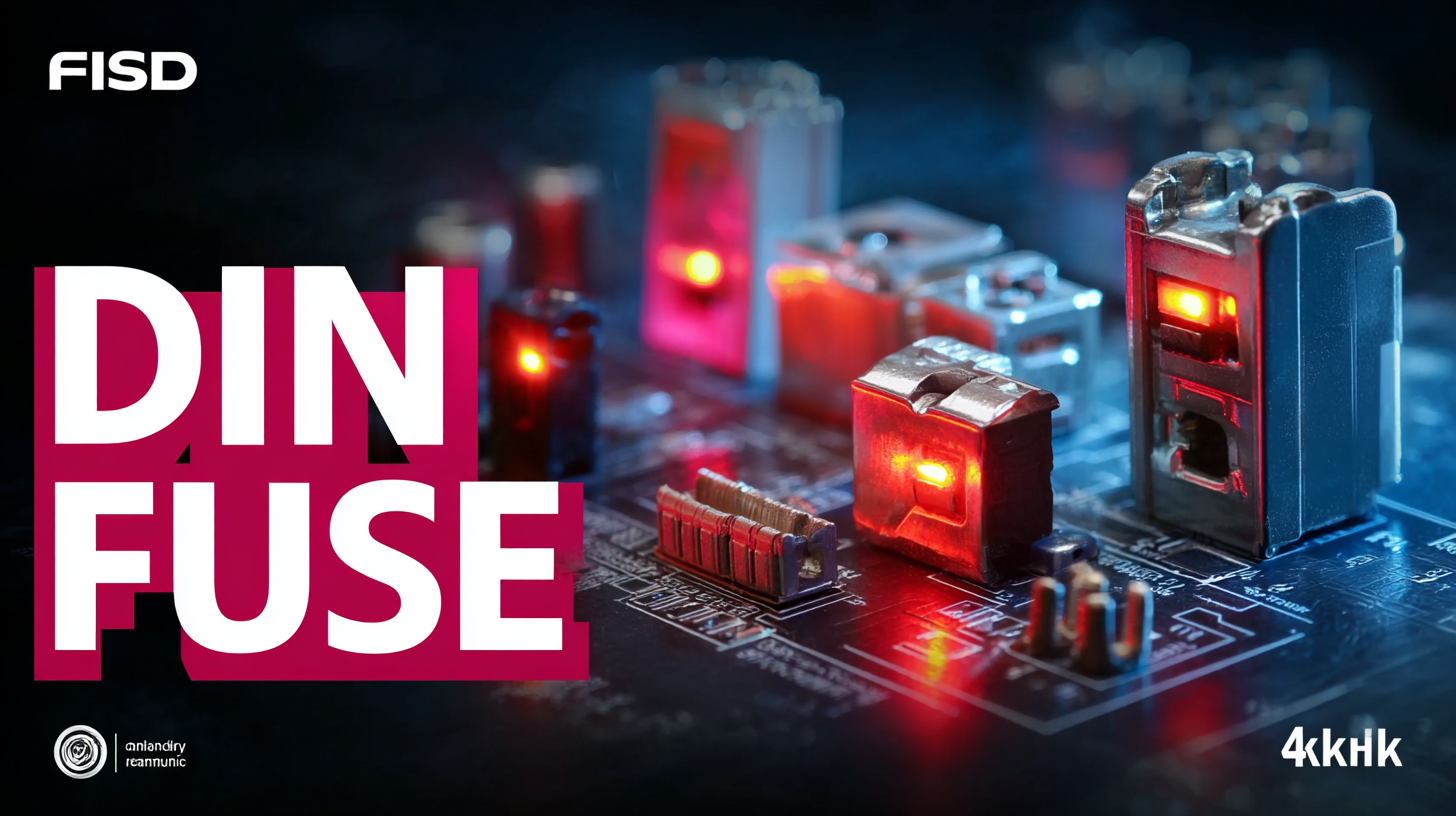
-
Home
-
About Us
-
Products
-
News
-
Blog
-
Contact Us
Leave Your Message

When it comes to ensuring the safety and efficiency of electrical systems, selecting the right DIN standard fuse is crucial. The right fuse not only protects your equipment from overloads and short circuits but also enhances the overall reliability of your electrical installations. However, with the myriad of options available in the market, making an informed choice can be overwhelming.

This ultimate checklist aims to simplify the selection process by providing clear and compelling reasons for considering specific factors when choosing a DIN standard fuse. From understanding the specifications and ratings to recognizing the importance of compatibility with existing systems, we will guide you through the essential elements that determine the best fit for your unique requirements.
Whether you are an engineer, technician, or DIY enthusiast, arming yourself with the right knowledge about DIN standard fuses can help you make the best decision for your needs.
When choosing DIN standard fuses, several key factors come into play to ensure optimal performance and safety. First, understanding the current and voltage ratings of the fuses you need is crucial. Selecting a fuse that can handle your specific electrical load prevents overheating and potential hazards. Additionally, consider the breaking capacity, which is the maximum fault current that a fuse can safely interrupt. A fuse with an adequate breaking capacity protects your circuits from damage during overload or short circuit events.
Another important aspect is the type of fuse required for your application. DIN standard fuses come in various types, each designed for specific uses, such as slow-blow or fast-acting fuses. Slow-blow fuses are ideal for applications with transient surges, while fast-acting fuses work well for sensitive equipment. Furthermore, evaluating the environment where the fuses will be installed is essential. Factors such as temperature, humidity, and exposure to corrosive elements can influence the performance and lifespan of the fuses. By taking these considerations into account, you can select the best DIN standard fuse tailored to your specific needs.
| Factor | Description | Rating (1-5) |
|---|---|---|
| Current Rating | Choose a fuse that matches or exceeds the system current requirements. | 5 |
| Voltage Rating | Ensure the fuse can handle the system voltage to prevent failure. | 5 |
| Breaking Capacity | Select a fuse with an appropriate breaking capacity for your application. | 4 |
| Temperature Rating | Consider the operational environment and its temperature fluctuations. | 3 |
| Physical Size | Ensure the fuse fits in the designated space in your equipment. | 4 |
| Mounting Type | Check for compatibility with the mounting structure (clip-in, screw-in, etc.). | 5 |
| Regulatory Compliance | Make sure the fuse complies with relevant standards and regulations. | 5 |
When selecting the best DIN standard fuse for your needs, it’s essential to understand the different types available in the market.
DIN rail electronic fuses have recently gained popularity due to their advanced control and protection features. For instance, newer models come equipped with
multi-channel options that provide efficient distribution and protection, particularly for a 24V power supply. This is
crucial for ensuring optimal safety and performance in various industrial settings.
When choosing a DIN standard fuse, consider the capacity and application requirements. Tips for selection include
assessing the load current, fault protection characteristics, and whether you need a fuse that can offer real-time monitoring.
Additionally, familiarize yourself with the growing trends in the industrial fuse market, projected to
reach $35.48 billion by 2032, reflecting a compound annual growth rate of 5.86%.
This underscores the importance of investing in reliable fuses that meet your operational demands.
Another important point to remember is the compatibility of the fuse with existing systems. Evaluate whether your fuse needs
to work within a specific environment, highlighting the importance of durability and response time.
By making informed choices, you can ensure that your systems operate safely and efficiently.
When selecting the best DIN standard fuse for your applications, after-sales service plays a pivotal role in enhancing your overall experience. A comprehensive after-sales service ensures that you have access to essential support, including installation guidance, troubleshooting assistance, and warranty provisions. According to industry reports, companies that prioritize customer service experience a 20% increase in client retention, highlighting the importance of a supportive relationship post-purchase.
Tip: Always inquire about the available after-sales support before making a purchase. A reputable supplier will provide resources such as technical documentation, user manuals, and dedicated support teams to assist you after your selection. This not only helps in resolving issues swiftly but also allows for a seamless integration of the fuses into your systems.
In addition, proper after-sales support can significantly extend the lifespan of your fuses by offering regular maintenance checks and performance evaluations. A study by the International Electrotechnical Commission indicates that regular maintenance can enhance the reliability of electrical components by up to 30%. Therefore, a commitment to after-sales service is not just an added benefit; it is an essential aspect of your fuse selection process.
Tip: Research customer reviews and testimonials regarding after-sales service from suppliers to gauge their reliability and responsiveness.

When selecting the best DIN standard fuse for your needs, evaluating the potential
repair costs
associated with these fuses is crucial. DIN standard fuses play a vital role in
protecting electrical circuits from overloads and short circuits, but the choice of fuse
can significantly impact maintenance expenses. It's important to consider not just
the initial cost of the fuses, but also the long-term financial implications of their installation and use.
Repair costs can arise from various factors, including the frequency of fuse
replacements and the time required for maintenance. Using lower-quality fuses may seem
economical at first, but they can result in higher failure rates and increased downtime,
leading to costly repairs and lost productivity. Conversely, investing in high-quality
DIN standard fuses may incur a higher upfront cost but can enhance system reliability
and reduce the likelihood of expensive repairs in the long run.
Therefore, careful evaluation of fuse quality and associated repair costs is essential
for making a smart investment that ensures both safety and efficiency.

When installing DIN standard fuses, it’s crucial to follow a step-by-step process to ensure safety and efficiency. According to the International Electrotechnical Commission (IEC), improper installation can lead to operational failures in over 30% of electrical systems, underscoring the importance of meticulous adherence to guidelines. Start by selecting fuses that synchronize with your circuit requirements. Make sure to check the voltage and current ratings specified in the report by the European Committee for Electrotechnical Standardization, which highlights that mismatches in these parameters can lead to severe system outages.
Once the appropriate fuses are selected, proceed to the installation phase. Begin by turning off power to the circuit to prevent electrical shock, as recommended by the National Fire Protection Association (NFPA). Next, securely mount the fuse holders in compliance with DIN standards, ensuring that they are easily accessible yet protected from environmental factors. According to a publication by the Institute of Electrical and Electronics Engineers (IEEE), maintaining a clean installation site can reduce the risk of shorts and improve the lifespan of your fuses by up to 20%. Following these steps will not only enhance the safety of your installation but also optimize the operational reliability of your electrical system.
This bar chart illustrates the distribution of different DIN standard fuse ratings in a typical electrical application. The data reflects common fuse ratings used in various circuits that may help you choose the appropriate options for your needs.